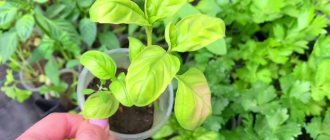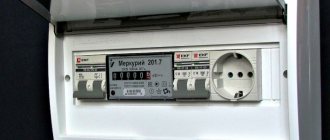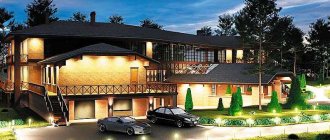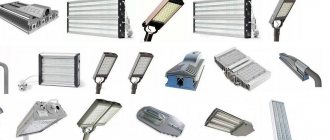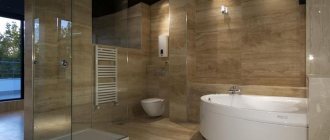Many gardeners begin planting seedlings in the depths of winter - a time when daylight hours are very short. Therefore, the hatching sprouts need to be provided with additional lighting, this is especially important if the windows on which it is placed face the north side or they are located on the lower floor of the house. Artificial lighting for plants must be turned on in the mornings and evenings. For this purpose, special phytolamps are used, but their price is so high that, combined with the other costs of growing vegetables yourself, gardening becomes an unprofitable activity, and the resulting harvest becomes “golden.”
What way out can you think of in this situation? Of course, you should try to build artificial lighting for seedlings yourself, using the tools of your home workshop. With modern access to all sorts of useful information, this is realistic and not so difficult, but first you need to understand what the light spectrum, cone, LEDs, etc. are.
Even inexperienced gardeners understand what additional lighting gives to seedlings. Rays of light stimulate photosynthesis of plants, but in insufficient light this process is sluggish, sprouts develop slowly, become too elongated, and seedlings get sick. You need to know that each vegetable crop has its own favorite spectrum of lighting, while natural daylight is suitable for all plants in its components. Manufacturers supply the market with a variety of types of lamps, with the help of which you can select artificial lighting for each type of garden crop, which has an effective effect, stimulating the rapid growth of healthy and strong plants.
Check the spectrum of diodes in the phytolamp
It is well known that plants require sunlight, consisting of waves of different lengths and colors, to grow and develop. In the spring, during the period of growing seedlings, when there is not enough sunlight, artificial lighting lamps are usually used to illuminate the plants. However, their emission spectrum is limited and occurs mainly in the yellow and green color sectors. In addition, incandescent lamps consume a lot of electricity. Fluorescent and modern energy-saving lamps are more economical, but emit little light in the red and orange spectral regions. And plants respond well with response growth to blue and red colors.
This optimal combination of colors was achieved by using LEDs in phytolamps. Therefore, these lighting sources are called bicolor. To choose the right lamp, you need to look at the so-called spectrogram (see Figure 1). It is also on the packaging of the lamp itself. The spectrogram should have peaks in the blue and red sectors of the spectrum. In the blue sector, the optimal wavelength for seedlings is 440-450 nm, and in the red sector – 650-660 nm. If the spectral indicators deviate strongly in both directions, such a lamp is not worth buying, since waves of other lengths are ineffective for seedlings.
Picture 1
Supplementary lighting with lamps: choosing a light source
When choosing lamps for illuminating seedlings, you need to consider how close the light they generate is to the natural solar spectrum. The most important “shades” in it are red and blue-violet. The first activates the process of chlorophyll synthesis, seeds germinate faster, seedlings develop better. The second “inhibits” the growth of the stem, while simultaneously accelerating cell division. The seedlings do not stretch and are powerful and strong.
For harmonious development, seedlings need light from the red and blue-violet regions of the spectrum
As for lighting power, seedlings require about 8000 lux. The lamps provide about 6,000 lux, the rest is natural light.
Phytolamps
Ideal for plants that are very suited to their violet-pink-blue spectrum. Among their other advantages are compactness, long service life, and energy efficiency. The disadvantage is the high price.
For humans, such lighting is unnatural and even harmful. The eyes get tired quickly, and some may even develop a persistent migraine. Therefore, lamps require special reflectors.
Phytolamps are specially designed for illuminating seedlings, but this shade of light is not very useful for humans
By the way, they are useful for any additional illumination. And it would be better if they were matte screens. Light is scattered and “absorbed” by plants much better than direct rays. The phytolamp screen can be metal or plastic. The first is more durable - when turned on for a long time, the plastic often does not have time to remove excess heat and melts.
Distinguish between real and rated diode power
Diodes come in different powers - 1 W, 3 W or 5 W. For the needs of a “home greenhouse,” the most suitable are emitter lamps with a primary lens that scatter light at an angle of 120 degrees. A 3 W lamp with the correct ratio of emitted light and heat is considered optimal.
In order not to make a mistake when choosing a lamp, you need to distinguish between the concepts of nominal and real power. Let's figure out what they mean. Rated power is the power at which the diode operates at its maximum limit. This means that the “life” of the diode under such a load will be short. To make diodes last longer, they are “powered” at half their power, that is, a 3 W diode will actually “show” 1.5 W. This is its real power. Self-respecting manufacturers of LED lamps are required to indicate this information on their websites (see Figure 2).
Figure 2
General rules and important nuances when additional illumination of seedlings
Lighting for seedlings will give the desired effect only if everything is organized correctly. Otherwise, the lamps will do more harm than good:
- To determine if your seedlings are getting enough light, keep an eye on the stems. If they become thinner and stretched out, it means there is not enough. Add more lamps.
- It’s also easy to check whether the seedlings are too hot. Hold your palm directly over the leaves. If you feel heat coming from the lamps, you need to raise them higher.
- The seedlings themselves will signal that it is time to turn off the lamps - in the evening their leaves rise and close slightly. Only ungerminated seeds are illuminated around the clock for the first 3–4 days.
- If you doubt whether additional lighting is needed during the day, turn on the lamps. When the light level changes noticeably, it is clearly necessary. If there is no visible difference, turn them off.
- The most common mistake is to think that seedlings on a south or east windowsill do not need additional lighting. It is necessary at least in the morning and evening hours, on cloudy days.
- Until the shoots emerge, place the lamps 10–12 cm above the containers and strictly vertically. Afterwards, lift it to a height of 40–60 cm and rotate it at an angle of about 60°. It is advisable to immediately make or purchase height-adjustable brackets and/or lamps on hooks in order to be able to change the height of their location without any problems.
- Having planted the seedlings, reduce the lighting power for 2-3 days to allow the plants to recover.
The photo clearly demonstrates how effective supplementary lighting is when lamps are used correctly.
Correctly calculate the power of the LEDs in the lamp
How to calculate the total power of LEDs? How many diodes should there be in a lamp? The answer to these questions depends on your specific situation. The most important thing in the choice is the relationship between the diode and the radiator (more on this in paragraph 6).
The formula for calculating the number of diodes is quite simple: M = K × M1 , where M is the total power of the lamp (W), K is the number of diodes, and M1 is the power of one diode. However, not all manufacturers are completely honest with customers. In order not to fall for the bait, we will close the gap in knowledge.
Let's say you choose a lamp with a power of 54 W and 18 diodes from Aliexpress, where the manufacturer claims that the power of each diode is 3 W. If you measure it with a wattmeter (a device for measuring the power of connected devices), it turns out that it produces 11 W.
It must be taken into account that the diode cannot operate at maximum for a long time! So, let's calculate: 54 W divided by 18 diodes, we get 3 W for each diode, which work at full capacity! But this cannot be! However, you are paying for 54 watts of rated power and 27 watts of actual power (see information above.) But when measured, it produces 11.6 watts. This is a far cry from 27W.
The real output of the diode is half the power. Then if we take 1.5 W of the power of each diode and multiply it by 18 diodes, we get that this lamp should consist of at least 27 diodes, and not 18, as it actually is. Deception? No, it’s just that there are diodes of lower power, that is, 1 W, which operate at half their power. Manufacturers, of course, do not write about this.
But how did this happen? We take 11.6 W of real power from the outlet, divide it into 18 diodes. And we get 0.64 W! That is, 0.64 W is almost half of 1 W.
Now we take the Minifermer.ru lamp. The packaging says that the lamp consists of 12 diodes with a power of 3 W - in total this is 36 W, that is, the real power from the outlet should be 15-18 W. This is true!
This means that the lamp contains exactly 3-watt diodes! They will work for a long time, and at the same time you will get good results. So the information for the lamp must indicate both the rated power and the real one.
Requirements for additional lighting
Duration of additional lighting
When determining the total time of additional lighting, it is necessary to take into account natural illumination during daylight hours. Different crops need artificial lighting from 5 to 8 hours every day. Light-loving tomatoes require combined light up to 17 hours, peppers and cucumbers - up to 14 hours, lettuce and radishes - up to 12 hours.
Backlight intensity
It is determined by the amount of heating of the plant foliage, which should be comfortable and not cause burns due to excessively high temperatures.
Relevance of highlighting in a specific time period
The optimal period for illumination is the morning before sunrise, as well as the evening after sunset.
Consider the radiator area
The radiator is an aluminum housing, which in base lamps is located in a circle or, if it is a linear lamp, the entire housing is the radiator. In Figure 3, the radiator is indicated by arrows.
Figure 3
The heatsink is designed to disperse the heat produced by the diodes. Therefore, the volume of the radiator must be designed for the number of diodes so that they do not overheat. The maximum temperature on the diode crystal should not exceed 70-75°C, otherwise they will “degrade”. That is, if there are many diodes in a lamp and the radiator is small, such a lamp will quickly fail.
Figure 4
In order for the LED phytolamp to work properly, the ratio between the radiator area and the number of diodes must be well adjusted. The distance between the diodes is equally important, that is, if there is enough space between the diodes, the heat is distributed faster. An example of the correct “fitting” of diodes on a radiator is shown in Figure 4.
You can find out detailed information about LED phytolamps from the following video:
Automatic lighting for seedlings.
Automation of lighting for plants consists of equipping lighting lamps with a time relay, which will turn on the lighting for a certain period of time according to a given schedule.
Let's look at several timers presented in our partner store. If you set out to purchase a time relay for lighting fixtures, we will try to help as much as possible with this.
Programmable digital timer for electrical equipment control - CN101A. | |
| Brand name: | Mayitr |
| Color: | White |
| Size: | 60 mm. x 60 mm. x 30 mm. |
| Supply voltage: | 12 V DC. |
| Switching voltage parameters: | 250 V., 16 A. (8 A. inductive load). |
| Built-in power supply: | 1.2 V., 40 mA. (accumulator battery). |
| Operating temperature: | -20 ~ + 55 ℃. |
| Operating mode: | manual/programmable - 17x (week or day). |
| Minimum interval: | 1 minute. |
| Control: | push-button digital. |
| Case material: | ABS plastic |
Waterproof Mounting Case with Clear Timer Cover - CN101A. | |
| Brand name: | Enclosure |
| Color: | White |
| Size: | 70 mm. x 70 mm. x 35 mm. |
| Case material: | ABS plastic |
Smart Socket with NTON Timer, Programmable Electronic Socket with European Plug ETG-63A. | |
| Brand name: | NTONPOWER |
| Color: | White |
| Size: | 130 mm. x 70 mm. x 90 mm. |
| Supply voltage: | 230 V AC. |
| Switching voltage parameters: | 250 V., 16 A. (8 A. inductive load). |
| Built-in power supply: | 1.2 V., 40 mA. (accumulator battery). |
| Operating temperature: | -10 ~ + 40 ℃. |
| Operating mode: | manual/programmable - (week/day/random). |
| Minimum interval: | 1 minute. |
| Control: | push-button digital. |
| Case material: | ABS plastic |
Programmable Feedthrough Socket Time Relay/Timer with European Plug - TM516. | |
| Brand name: | SINOTIME |
| Color: | White |
| Size: | 125 mm. x 57 mm. x 75 mm. |
| Supply voltage: | 230 V AC. |
| Switching voltage parameters: | 250 V., 16 A. (8 A. inductive load). |
| Built-in power supply: | 1.2 V., 40 mA. (accumulator battery). |
| Operating temperature: | -10 ~ + 40 ℃. |
| Operating mode: | manual/programmable - (week/day/random). |
| Minimum interval: | 1 minute. |
| Control: | push-button digital. |
| Case material: | ABS plastic |
Programmable electronic socket timer with European plug - TM02. | |
| Brand name: | Rehoboth |
| Color: | White |
| Size: | 130 mm. x 58 mm. x 45 mm. |
| Supply voltage: | 230 V AC. |
| Switching voltage parameters: | 250 V., 16 A. (8 A. inductive load). |
| Built-in power supply: | 1.2 V., 40 mA. (accumulator battery). |
| Operating temperature: | -10 ~ + 40 ℃. |
| Operating mode: | manual/programmable - (week/day/random). |
| Minimum interval: | 1 minute. |
| Control: | push-button digital. |
| Case material: | ABS plastic |
Electronic digital timer pass-through socket with European plug - TM519. | |
| Brand name: | SINOTIME |
| Color: | White |
| Size: | 116 mm. x 59 mm. x 36 mm. |
| Supply voltage: | 230 V AC. |
| Switching voltage parameters: | 250 V., 16 A. (8 A. inductive load). |
| Built-in power supply: | 1.2 V., 40 mA. (accumulator battery). |
| Operating temperature: | -10 ~ + 40 ℃. |
| Operating mode: | manual/programmable - (week/day/random). |
| Minimum interval: | 1 minute. |
| Control: | push-button digital. |
| Case material: | ABS plastic |
Electromechanical daily timer, walk-through socket with European plug - GMT-01A. | |
| Brand name: | Socket |
| Color: | White |
| Size: | 82 mm. x 45 mm. x 56 mm. |
| Supply voltage: | 230 V AC. |
| Switching voltage parameters: | 250 V., 16 A. (8 A. inductive load). |
| Operating temperature: | -25 ~ + 40 ℃. |
| Operating mode: | manual - (24-hour cyclic repetition). |
| Minimum interval: | 10 minutes. |
| Control: | mechanical disk segment. |
| Case material: | ABS plastic |
Programmable electronic timer for installation on a GEYA THC-20A DIN rail. | |
| Brand name: | GEYA |
| Color: | White |
| Size: | 82 mm. x 45 mm. x 56 mm. |
| Supply voltage: | 180-250 V AC. |
| Switching voltage parameters: | 250 V., 20 A. (10 A. inductive load). |
| Built-in power supply: | 3 years battery life (lithium battery) |
| Operating temperature: | -10 ~ + 40 ℃. |
| Operating mode: | manual/programmable - (week/day/random). |
| Minimum interval: | 1 minute. |
| Control: | push-button digital. |
| Case material: | ABS plastic |
ASTRONOMICAL programmable electronic timer for DIN rail GEYA THC. | |
| Brand name: | GEYA |
| Color: | White |
| Size: | 82 mm. x 45 mm. x 56 mm. |
| Supply voltage: | 180-250 V AC. |
| Switching voltage parameters: | 250 V., 20 A. (10 A. inductive load). |
| Built-in power supply: | 3 years battery life (lithium battery) |
| Operating temperature: | -10 ~ + 40 ℃. |
| Operating mode: | manual/programmable/astronomical adjustment - (40 years perpetual calendar). |
| Minimum interval: | 1 minute. |
| Control: | push-button digital. |
| Case material: | ABS plastic |
…
Consider the distance from the lamp to the illumination area
At what distance from plants should phytolamps be placed? The answer to this question will depend on the room and how many plants you plan to grow, as well as the length of daylight hours.
| Real lamp power | Distance to plants | Area coverage (diameter) |
| 7-10 W | 20-30 cm | 25-30 cm |
| 10-15 W | 35-40 cm | 45-50 cm |
| 15-20 W | 40-45 cm | 85-90 cm |
To ensure that the lamp retains its functions and the effect of such lighting does not decrease, it can be equipped with additional lenses in order to narrow the beam of light. The area of illumination will depend on the selected lenses. In order not to overpay for extra lamps and unnecessary power, it is better to select them with the help of professionals.
How to enhance natural light
The most economical way to improve lighting for seedlings. The surface of the window sill is lined with foil; behind the containers with seedlings, a “screen” of cardboard 15–20 cm high is installed, covered with it. Or pots and containers are placed in a box covered with foil, in which the wall facing the window is cut out.
The sun's rays passing through the glass are reflected from the foil onto the plants, illumination improves by 20–30%. Moreover, the light comes evenly from all sides, eliminating the problem of pulling the stems towards the window and the need to regularly turn the containers.
The foil screen can be replaced with a thin white fabric, for example calico - the light in this case will be softer and more diffused
But this technique does not solve the problem of cloudy days and windows facing north. It is also ineffective if there are a large number of seedlings, when the containers are placed on the windowsill in several rows or on racks with shelves at different heights.
Video: foil screen to enhance natural light
Consider installing additional lenses
As mentioned earlier, the diodes already have a primary lens and an illumination angle of 120 degrees. But if you hang the lamp too high, less light will reach the plants and it will be more scattered. That is, the light will cover an unusable area. This use is ineffective, but you will have to pay extra for electricity. Installing additional lenses will help solve this problem. They come in 15, 30, 45, 60, 90 degrees. Selecting a lens will make it possible to choose the desired height and maintain the useful lamp power needed by the plants.
The need for additional light
Additional lighting for seedlings is the most important factor in growing viable plants. Nutritious soil and systematic watering are not sufficient for development, since the main source of energy for plants is light.
Light energy is absorbed by chlorophyll (a special pigment) contained in the leaves. It supports photosynthesis, a process that provides seedlings with nutrients (hydrocarbons). The starting materials for a photochemical reaction are carbon dioxide and water, and the byproduct is oxygen.
Thus, by combining natural and artificial lighting, seedlings receive balanced nutrition, promoting intensive growth of both the above-ground part and the root system.
Select a lamp of the desired spectrum
Bicolor spectrum - the main spectrum for giving the plant the energy necessary for photosynthesis. A lamp with this spectrum is recommended:
- for illuminating any plants on the windowsill, balcony and in places with minimal sunlight;
- for growing seedlings and young plants;
- for additional illumination of adult plants indoors with additional light sources;
- to support plants in winter and in low light conditions.
Full spectrum. These are bicolor lamps with a wider range of peaks in the red and blue fields. They are universal and will suit many plants. In terms of energy efficiency and spectrum peaks, these light sources are slightly inferior to bicolor lamps, but due to a wider spectral zone they allow the plant to receive maximum artificial light, similar in effect to solar light.
There are more advanced lamps - these are full-spectrum lamps with the addition of white light. They are suitable for use in places where people live. The light from such a lamp looks warm white, but contains wavelengths useful for plants.
Multicolor spectrum is a unique lamp that combines red, blue, warm white and far red light. It provides maximum stimulation of flowering and fruiting in many plants, including orchids and adeniums, as well as a large proportion of red and blue light for photosynthesis during the growth stage. A lamp with this spectrum is recommended:
- for illuminating adult plants;
- to stimulate flowering and fruiting;
- for growing indoors in the absence of sunlight;
- for additional illumination of indoor flowers, especially orchids;
- for illuminating decorative foliage plants.
The average recommended time for additional illumination with phytolamps is 13-14 hours a day. These lamps can be used not only to extend daylight hours, but also to replace it in a dark room. At night, plants take a break because, like humans, they have a biological clock, and they need “sleep” at night.
Peppers, tomatoes, eggplants, and cucumbers are recommended to be illuminated for 8 to 13 hours a day. Green crops (salads) - 8-11 hours a day, slow-growing plants (celery, radishes, turnips) - 12-16 hours a day.
My choice of LED lamps for plants, review
The active use of LEDs now occurs not only in architectural and interior lighting, advertising, and the automotive industry, but also in a narrower specialization, including medicine and industrial lighting, as well as in agriculture for lighting greenhouses. I've been doing some experimenting with LED lighting, and now I'll tell you about how I bought LED grow lights.
Contents of the article: my choice of LED lamps for plants
- Experiment: seedlings under LED lamp
- My conclusions and reviews about LED lamps for plants
- Using LEDs to Create Greenhouse Lighting
- Which LED lamp is suitable for plants?
- Why change color
- Phytolamps
- Advantages and disadvantages of LED phytolamps
- Where are LED lamps for plants used?
- Types of LED phytolamps for plants and instructions for their use
- How to properly organize lighting for plants
- How to arrange LED phytolamps
- How to calculate the number of LED lamps for plants
- Price for LED lamps for plants
- Should you buy an LED grow light or make one yourself?
- Video about such miracle lamps
- Additional material on this topic
- Return to Yandex search
- or write a comment
First, I’ll tell you about my experience with LED lamps for plants, and then we’ll move on to the theory of why they are needed, where and how they are used.
Experiment: seedlings under LED lamp
So, I made several mini-greenhouses with my own hands. The design is very simple. I didn't come up with anything original. I made two boxes, stuffed plywood, attached 3 standard cartridges to each, and used 2x0.75 wire. I bought lamps with E27 socket.
My goals:
1. Make sure that it is possible to grow plants using LEDs as the main lighting.
2. Grow seedlings using two different types of lighting: using a fluorescent lamp and LEDs. Compare growth rate.
The goals were set, I began to implement them. Three Camelion Bio 18 W fluorescent lamps and three OSRAM FLORA 18 W LED lamps were purchased. Let me make a reservation right away that the price of Osram lamps is much higher, and as for the test results, more on that a little later. By the way, I have already dealt with LED lamps from this manufacturer before, read about it in the article How I bought OSRAM LED lamps.
How did my plants grow?
So, things progressed, and on the third day I saw that the cucumber seedlings were growing in both cases, the tomatoes were growing on the fifth and sixth days (under LED and fluorescent lamps, respectively). I also measured the luminous flux of the lamps, just in case. The luminous flux of a fluorescent lamp is 1900 lux, and the OSRAM FLORA LED lamp is 2900 lux, that is, 1.5 times higher, but the cost of such a lamp is 2 times higher.
My conclusions and reviews about LED lamps for plants
The task was to answer two questions considered at the beginning of the article. My reviews:
1. LEDs are really suitable for greenhouse lighting.
2. Plants can be grown under different lighting conditions; both fluorescent and LED lamps are suitable for this. The advantages of the first option are that they are cheap, and the advantages of the second option are that the plants grow much faster. After two weeks of growing cucumbers and tomatoes, I realized that using LED lighting, plant growth increases by 10-15%. I would choose OSRAM FLORA for myself, because regardless of the price, everything should be of high quality, including lighting.
In the next article I will tell you about how I bought LED panels for plants.
Using LEDs to Create Greenhouse Lighting
After all, more than two hundred years ago, Dutch scientists made the discovery that plants need water, air and light to live, the main source of which is the Sun. There is a point of view that “white” light is the most favorable for plants, since it is the natural light in which life on Earth originated, which means that plants are most adapted to it. However, it should also be taken into account that plants are adapted only to the radiation spectrum that they manage to obtain according to their location in the ecological niche. The radiation spectrum varies depending on latitude and time of year and even day, so sunlight should not be perceived as universal for the entire diversity of plants.
The source of energy for the process of photosynthesis is primarily red rays of the spectrum along with a small proportion of blue, which is also important for plant development, and the lack of which can lead to excess growth and cause yellowing of leaves. This should be taken into account when creating greenhouse lighting, since plants usually do not have enough natural light in such conditions.
Previously, high-pressure sodium lamps and metal halide lamps, along with fluorescent lamps, most often served as additional light sources. The advent of LED lights offered a completely new stage in high-quality plant lighting. Thanks to RGB LEDs, it is possible to change color and brightness.
Which LED lamp is suitable for plants?
The main advantage of LED lamps is their high efficiency. Due to their low power consumption, they can be used as a constant light source in greenhouses, as well as for illuminating indoor plants and seedlings. LED plant lights or, as they are also called, LED phytolamps, emit light in the blue and red spectrum, which is best absorbed by plants, promoting their growth.
Video - review of phytolamps for plants It should be noted that not every LED lamp is suitable as a light source for plants. Special LED lamps called “led grow” are designed for this purpose. You can buy them in a specialty store, order them online, or make them yourself.
LED grow phytolights emit a favorable spectrum of radiation for plants, which is measured in nanometers. Our eyes see each color in a different spectrum. We perceive the yellow-green spectrum best. The combination of all colors is perceived by the human eye as white. In turn, plants distinguish 2 favorable spectrums for themselves: blue and red.
Which lamp for seedlings is better to choose?
It has been scientifically proven that the blue spectrum in the range from 430 to 455 nm is most suitable for activating growth for plants. It is the blue color that the plant absorbs the most during its growth.
If the agronomist is faced with the question of not enhancing the growth of a plant, but improving its flowering, then LED grow is installed with a red emission spectrum in the light wavelength range from 600 to 660 nm.
Light that goes beyond the above ranges has virtually no effect on the growth and flowering of plants and leads to their degradation rather than development.
An interesting video about LED lamps for plants with an E27 base - for a regular socket
Why change color
Why is it necessary to change color? It should be immediately said that each type of plant at different stages of development perceives light wavelengths differently. For example, lighting flowers and vegetables requires the use of different spectra. Seedlings also require more intense lighting than mature plants.
RGB LED lamps provide a well-balanced light spectrum, making them a versatile light source for greenhouses.
Their second advantage is the change in brightness, since plants in a greenhouse require a certain level of illumination during growth. After all, natural light changes throughout the year and day. Conventional lighting sources cannot maintain a given lighting level with good accuracy. Varying the brightness of LED lamps can solve this problem and also reduce energy costs.
As a result, LED lamps, despite their higher price, are a more profitable option for lighting plants, as they quickly pay for themselves due to low energy consumption.
Phytolamps
Such lamps are used for growing plants in greenhouses or winter gardens. They initially have a special spectrum of blue and red waves. They consume little electricity, producing minimal heat output levels, and are a cost-effective solution for both home growing and commercial use in agricultural greenhouses.
They are also ideal for providing additional light to tropical plants and trees, allowing for maximum benefit through maximum plant growth.
Advantages and disadvantages of LED phytolamps
You can find several advantages of LED phytolamps over conventional lamps for plants:
- High efficiency, which can reach 90-95%; it is explained by the fact that LED phytolamps emit light of the necessary spectrum for plant development without wasting extra energy;
- LED lamps for plants have a high working life - up to 50 thousand hours of continuous operation;
- LED lamps consume very little energy - 5-10 times less than incandescent lamps, and 2-3 times less than energy-saving lamps;
- Unlike incandescent lamps and energy-saving lamps, the service life of LED phytolamps is not affected by changing on-off cycles;
- LED lamps, as a rule, do not heat up above 50-60 °C, while incandescent lamps of similar power can heat up to 450 °C, which can negatively affect plant growth, as well as damage the polyethylene or plastic walls of the greenhouse;
- Possibility to adjust the light output, thus providing ideal lighting for both plants that love bright light and those that prefer shaded areas;
- Phytolamps have a high degree of IP protection, so they can work in conditions of high humidity;
- LED lamps are harmless to people and animals and do not require special disposal.
Effect of wavelength on plant development
Among the disadvantages of LED phytolamps is their high cost. The price of such lamps can reach several hundred dollars, so lighting a large greenhouse with their help can cost a pretty penny. Usually this factor stops many gardeners, although every year the price of LED lamps falls.
Among the LED lamps for plants you can find good product reviews. It produces LED phytolamps with a power of 9 W with an E27 base and an approximate continuous operation life of 30 thousand hours. Such a light bulb can serve as a good example of a LED phytolamp for domestically produced plants. emits red spectrum light in the 650 nm range, which has a positive effect on plant development.
The Uniel 9W E27 LED lamp has the following technical characteristics:
- works 30 times longer than analogues;
- has a lighting angle of 160 degrees;
- emits light of the required spectrum without wasting electricity;
- current savings can reach 90% compared to conventional incandescent lamps;
- has a standard E27 base size, so it can be connected even to a regular ceiling or table lighting fixture;
- due to slight heating (50 °C) it does not affect the indoor microclimate;
- has a beneficial effect on all types of plants, regardless of their age and type.
Video about Uniel 9W E27 LED lamp
In addition to Uniel, LED lamps for plants are produced by such companies as General Electric, Secret Jardin and Paulmann. Well-known brands include: Osram Fluora, Philips, Sylvania, Optima and others. Among the Russian manufacturers of LED phytolamps, the following should be mentioned: Yug-Service LLC, Fito-M, Fitosvet, Ecolight LLC, Focus LLC, Optonika, etc.
The power of LED products starts from 1 W and can reach several tens. To illuminate a greenhouse, experts advise buying several powerful LED lamps instead of many low-power ones. If you are simply growing seedlings on your windowsill, in your case it would be optimal to use 1-2 LED phytolamps of blue or red radiation spectrum with a power of 5 W.
Where are LED lamps for plants used?
Lighting flowers with LED lamps
As a rule, LED lamps are used for growing seedlings. They are also used in greenhouses as illumination for adult plants during their growth and fruiting, which usually falls from early spring to late autumn.
LED phytolamps for plants are often used in greenhouses and flower shops. They can also be found in households, especially in those apartments and offices where there is not enough natural sunlight.
Video about which lamps are better for illuminating seedlings: fluorescent or LED
Types of LED phytolamps for plants and instructions for their use
The following can be used as an LED light source for plants:
- individual LED lamps;
- several lamps installed in one lamp;
- LED tubes (T8 type lamps);
- LED strips;
- LED panels for plants.
Depending on the type of plant, it needs a certain amount of lighting. Lighting is measured in Lux. 1 Lux = 1 Lumen multiplied by 1 sq.m.
Required lighting level for different crops
| No. | Name of crop | Required lighting level in Lux |
| 1. | Tomatoes | 5000-6000 |
| 2. | Pepper | 3000-4000 |
| 3. | Tea | 3000-3900 |
| 4. | Bananas | 4000-6000 |
| 5. | Legumes | 4000-6000 |
Instructions for using LED lamps for plants
Lighting plants using led grow will depend on their type and age. You should remember the following important recommendations:
- seedlings are well affected by round-the-clock lighting in the first days after harvesting, with a further reduction in daylight hours to 14-16 hours;
- for plants with winter suspended animation (Decembrist, Kalanchoe, Zamioculchas and others), daylight hours in the cold season should not exceed 8-10 hours;
- for flowers that require bright color (cactus, passionflower, geranium, jasmine, rose), experts recommend using lighting up to 6000-7000 Lux;
- for flowers that prefer shade (anthurium, violet, fern), the lighting level should be in the range of 2500-3000 Lux;
- Medium lighting is comfortable for most vegetables (cucumbers, tomatoes, peppers) and flowers (gerberas, chrysanthemums, orchids).
An example of 4-day-old seedlings grown using an LED phytolamp and sunlight
Comparison of grown plants (on the left - using a phytolamp, on the right - using sunlight)
The plants on the left, grown under the rays of a blue-spectrum LED lamp, look healthier, stronger and taller. This is due to the fact that these lamps produce light waves exclusively of the length that is necessary for plant growth, without wasting energy.
Below I will tell you in detail how to organize lighting for plants using led grow.
How to properly organize lighting for plants
Organizing lighting for plants is not difficult if you follow the following rules:
- Lamps (especially non-LED ones) should be installed at a distance of at least 10 cm from the top of the plant, otherwise the latter may get burned and die;
- If lamps for lighting plants are installed on a special installation that supports them, it should be possible to raise such an installation to a height of at least 40 cm, since the plants will grow and the distance between them and the light source will decrease, which can also lead to burns (see. paragraph 1);
- At the foot of the plant you can place a reflector, which will provide additional illumination. It is not necessary to buy an expensive specialized reflector. Its role can be played by ordinary foil, which you can lay on the windowsill with your own hands;
- Try to keep the plants being illuminated to be approximately the same height. This will allow you to bring the lamps as close as possible to them, without fear of damaging individual tall plants, and achieve the greatest efficiency from lighting. You can level the plants according to their height using stands under them or simply by slightly bending the tops of the plants and fixing them in this position using a rope;
- In the center under the lamp, the light intensity is always higher than at the edges, so more light-loving plants should be placed here;
- "Female" plants require more light than male plants;
- For plant photosynthesis, it is important not only to have high-quality lighting, but also to change the cycles of “day” and “night” when there is no light. Using the controller, you can configure LED lights so that they automatically turn on and off at a specified time.
Time to illuminate flower plants
Lighting for plants should work on average 12-15 hours - exactly as long as daylight hours last. After this, it is turned off for 8-10 hours so that the plants can rest, and the cycle is repeated again.
How to arrange LED phytolamps
Most LED grow lights are highly directional - their light is concentrated in one direction. Therefore, LED lamps should be placed close to plants. LED lamps do not overheat, so you don’t have to worry about burning your plants. The optimal distance is 15-30 cm.
Vertical lighting of plants with LED lamp
To illuminate plants, LED lamps can be positioned:
- above;
- below;
- on the side.
The most effective is the first option. Vertical lighting most stimulates the growth and development of plants.
How to choose a lamp for plants. Part 1
How to calculate the number of LED lamps for plants
For LED lighting of plants to bear fruit, it is necessary to take care not only of the quality of LED lamps, but also of their quantity. To calculate the required number of LED phytolamps, a number of factors should be taken into account:
- the need for a specific crop in Lux (6000 Lux is suitable for most plants);
- lighting angle (vertical, horizontal, average);
- distance from the lamp to the top of the bush;
- illuminated surface area.
First you need to find out what luminous flux is required to illuminate a particular plant. To do this, you need to multiply the amount of required lighting in Lux by the area of the illuminated surface in square meters. For example, for high-quality lighting of tomatoes located in a seedling pot with an area of 0.6 sq.m., 5000 lux of lighting is required. This means we multiply 5000 Lux by 0.6 sq.m. and we get 3000 Lumens - the amount of required luminous flux.
It should be borne in mind that a certain percentage of the light flux may be absorbed by walls and objects located in the room. Light output is also lost if the light source is too far from the plant. To compensate for losses, I advise buying a lamp 10-30% more powerful than the calculations require. The lamp power reserve compensates for the loss of light flux, so the plant will not suffer from a lack of light.
How to choose a lamp for plants. Part 2
Price for LED lamps for plants
| Model name | Short description | Price in rubles |
| Uniel LED-M80-20W/SP/E27/CL ALS55WH | LED lamp for plants with a power of 20 W with an E27 base. Emits light in the red and blue range of the radiation spectrum | 1 749,00 |
| Espada-Fito E-27 | Lamp for plants (including aquariums) and hydroponics. Has a standard E27 base. Power – 3 W. Can operate at various network voltages from 85 to 265 V, resistant to voltage surges | 760,00 |
| ULF-P40-100W/SPFR | LED spotlight for plants. It has a protection class of IP65, which allows it to work in conditions of high humidity. Operating temperature range from -20 °C to +45 °C. Color rendering index – Ra 70. Service life – 50 thousand hours. Warranty – 2 years | 5 950,00 |
| Jazzway E27 12W | 12 W LED bulb. Diameter – 122 mm. Does not have the ability to connect a dimmer. Service life declared by the manufacturer is 25 thousand hours | 1 200,00 |
Should you buy an LED grow light or make one yourself?
If you want to save money, instead of a ready-made LED lamp or LED panel for plants, you can purchase several inexpensive LED grows and create such a lamp yourself, which will cost you an order of magnitude cheaper.
The shape for the lamp can be chosen from plastic. It can be anything - the one that best suits your needs.
An example of a DIY LED phytolight
An important advantage of purchased LED lamps for plants is that they have several lighting modes for different periods of plant growth. Also, some models provide, in addition to the standard red and blue emission spectra, green, which has a beneficial effect, for example, on pumpkin crops. Thus, everyone must decide for themselves whether to buy an LED phytolamp or assemble it themselves.
Video on how to assemble an LED lamp for plants with your own hands
Video about such miracle lamps
- How to make a rock garden
- A concrete kitchen countertop and a stone sink are the main...
- Natural and artificial lighting of premises
- Choosing a metal door
- Advertising on the website
- Modern lighting in the interior
Buy phytolamps with a guarantee
This is a very important point. Manufacturing companies and conscientious sellers must issue a warranty for the lamp. It is very important. If you buy a lamp from an unverified seller, you will not be able to prove to him that it failed not through your fault, but, for example, due to a power surge. And not everyone will undertake to repair such a lamp. Therefore, choose LED bulbs that come with a minimum 1-year warranty.
Some companies, including Minifermer.ru, offer post-warranty service, which is also important. After all, if one diode fails, it will be replaced immediately. And you don't have to figure out which diode is needed and how to solder it.
If you are an avid summer resident who is used to “preparing the cart in winter,” take care of the future harvest now. With lamps from the Minifermer.ru company, your seedlings do not face a lack of light and heat on the windowsill.
Illumination of plants with LEDs
The process of photosynthesis is significantly influenced not only by spectral exposure (blue or red light), the light regime is also important. It lies in the regular change of “day” and “night” for plants. With its help, it is possible to regulate the stages of flowering and vegetation by simply changing the duration of exposure to light and darkness. There are neutral types of flowers; for example, the light regime does not affect the development stage of a rose in any way. Before you start growing any crop, you need to find out the preferences and rules for maintaining your future plantings.
Lamps for seedlings
Seedlings are small, immature sprouts that require special care. LEDs for plants are ideal for its cultivation. They are able to make conditions comfortable thanks to a constant temperature and the necessary radiation spectra at this stage of development. Daylight (from fluorescent lamps) does not have the same effect. It is recommended to install ice lamps directly above the seedlings, because the light flux here is directed strictly downward and does not scatter. This will not harm the plantings; even contact with the surface of the lamp will not cause a burn to the leaf.
Greenhouse lighting
LED lighting for greenhouses is used more and more every year. No other lamps can give the same effect (you can see it in the performance). The LED strip for plants has an adhesive surface and can be attached to any installation. It is durable, does not contain gas, and is therefore not explosive. Greenhouses are very humid, so it is worth taking care to properly protect the tape. Otherwise it may fail. Experts say that modular systems are much more efficient. In their opinion, ribbons perform a more decorative function.
LED strips - how to use at home
LEDs are a modern material that is now often used in everyday life and in production for additional illumination. They are especially effective for lighting shelving without heating the air around the plants. They can be bought at a regular hardware store or ordered from online stores. They are not expensive, but with a power supply they will be a little more expensive, but there will be no problems with hooking it up.
For optimal illumination of seedlings, alternating 2 red LEDs and 1 blue is recommended.
Advantages of LED strip:
- They are inexpensive, affordable, and their price quickly pays for itself.
- They emit red and blue spectrum rays.
- They consume a minimal amount of electricity.
- Easy to install.
- They illuminate a fairly large area.
- They don't heat up.
To make a lamp, you do not need any special knowledge. It can be made from an aluminum profile onto which a tape is glued like a snake, which has an adhesive base on one side. In doubtful cases, you can also glue it with Moment glue for strength.
